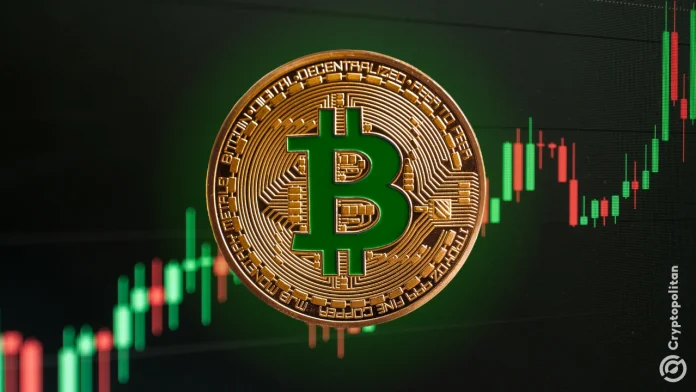Long-term Bitcoin holders are showing potential bullish momentum following an addition of 300,000 BTC by long-term holders in 20 days. On-chain data also revealed that long-term holder spending dropped to its lowest since September 2024.
The behavior of LTHs accumulating BTC while their spending activity drops signals confidence in future price appreciation, as they are considered the backbone of the Bitcoin network.
LTHs are wallets that have held digital assets for over 155 days.
Long-term BTC holders reduce spending and increase holdings
LTH spending is at its lowest level since September 2024. Over the past 20 days, the cohort has added 300K BTC – a bullish signal for the market. pic.twitter.com/sN0YgkxQya
— Axel 💎🙌 Adler Jr (@AxelAdlerJr) May 26, 2025
When long-term Bitcoin holders reduce spending and increase holdings, they expect prices to surge ahead and are unwilling to part with their assets at current levels. Accumulation phases by LTHs also historically precede major market rallies.
CryptoQuant researcher Axel Adler noted that miners have stepped up their sales on exchanges after Bitcoin hit its new all-time high of $112,000. On-chain data also showed that inflows have doubled from an average of 25 BTC to 508 BTC per day, while historical peaks reach around 100 BTC.

According to Adler, selling has accelerated. He also argued that the market is still a long way from peak volumes, and the market is absorbing the extra supply. At the time of publication, Bitcoin is currently exchanging hands at $109,560, a 4% increase in the last 7 days.
Adler acknowledged that miners are currently earning around $50M per day, while historical revenue peaks exceed $80M. He suggested that it indicates a high but not yet peak level of network activity. The researcher also said that miners are already generating significant income, but there is still room for the market to climb back to those previous highs.
CryptoQuant analytics showed that its Unspent Transaction Outputs (UTXO) reached is nearing the 99% threshold, meaning 99% of all BTC holdings are in profit. The tool provides a deeper understanding of the state of unrealized profits across the network.
The firm noted that its current level historically aligns with periods of market euphoria and strong uptrend but can also signal potential overheating if sustained for too long. CryptoQuant believes that as BTC inches toward new highs, the UTXO metric reinforces the strength of the rally.
“Right now, it’s hard to say we’re in a euphoric phase. The broader macroeconomic context and the uncertainty surrounding the Trump administration’s policy direction make it difficult for investors to flip fully risk on.”
–Darkfost, Analyst at CryptoQuant.
Darkfost also argued that net profits are still within normal levels for a bull run. According to his analysis, profit-taking is not a sign of weakness but a crucial part of market structure during uptrends. He believes it’s what keeps investors engaged and prevents parabolic exhaustion.
The CryptoQuant analyst also revealed data showing realized profits currently stand at 104,000 BTC, or around $11 billion. According to him, that number is not as large as it seems because it’s still below the historical danger zone of 350,000 BTC—a level that signals euphoric conditions or overheating.
Darkfost said it suggested the market remains in a healthy profit-taking zone. He also noted that profit-taking is not a red flag during a bull market, but it’s necessary because it helps maintain momentum and keeps participants engaged.
LTHs capitalize on BTC’s market drop to $109K
The BTC market recently experienced two major liquidation events, which caused a cascade of forced selling from over-leveraged traders. Amr Taha from CryptoQuant said overleveraged short-term traders were flushed out while long-term holders have been quietly capitalizing on the market reset.
He noted the first flush occurred when the digital asset fell below $111,000, and over $97 million in long positions were liquidated. As BTC broke $109,000, another $88 million longs were wiped out in the second wave.
According to Taha, it caused long-term holders’ realized capitalization to surge past $28 billion, a level not seen since April. He also argued that long-term investors are using this period of forced selling to increase their exposure and accumulate more Bitcoin in the long run.
Data analytics firm Alphractal noted that Bitcoin’s surge has shifted the behavior of short-term holders (STHs), who are now distributing assets more aggressively. According to the company’s analysis, such distribution often occurs during market peaks, as profit-taking slows buying momentum. The firm argued that the shift could signal that Bitcoin is entering the final stage of its current bull cycle.
Cryptopolitan Academy: Tired of market swings? Learn how DeFi can help you build steady passive income. Register Now




